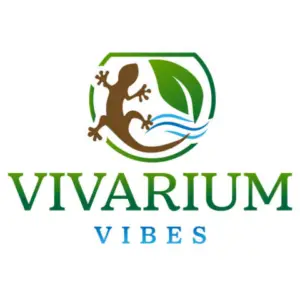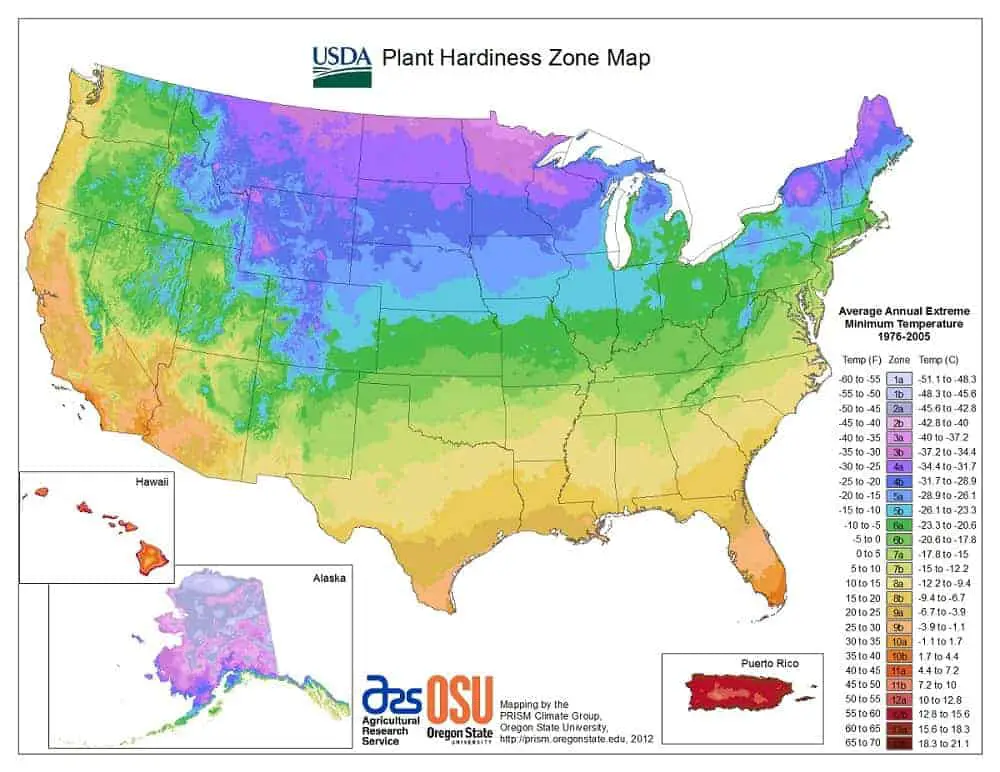This page may contain affiliate links that allow us to make a small commission from qualifying purchases (at no extra cost to yourself). We appreciate your support.
Terrariums are a great addition to any garden or display inside your home. But what about outdoors? Can terrariums be kept outside? I have always wanted to create a nice outdoor display but was not sure how to keep a terrarium safe against the elements and what types of terrariums would thrive in certain climates. I decided to do some research and find out.
Can terrariums be kept outside? Terrariums can be built to withstand outdoor elements and can survive in an outdoor setting. Open vessels planted with succulents and cacti work best. However, there are many factors that affect having an outdoor terrarium and knowing what they are might help you decide what is right for you.
Although most people tend to avoid creating an outdoor terrarium due to the many complexities that arise from an outdoor setting, such as unpredictable weather conditions and other elements, understanding these challenges and how to overcome them will help you to decide if an outdoor terrarium is the right decision for you.
Closed Vs Open Terrarium: Which is best for Outdoors?
There are two types of containers used for terrariums, closed and open. Open terrariums are best suited for the outdoors as they can be designed to tolerate outdoor elements more effectively. Succulents and Cacti are excellent plant choices that will flourish in most outdoor settings and are suitable for open terrariums.
There are a lot of differences between open and closed terrariums and both have different plant, lighting, and maintenance requirements. Below is a brief description describing the main differences between the two types.
Closed Terrariums
Closed terrariums are fully enclosed containers, usually made from glass with a removable lid used for maintenance. They are an ideal environment for plants that thrive in wet, humid conditions, with indirect light. Closed terrariums create their own water cycle through high degrees of humidity and moisture.
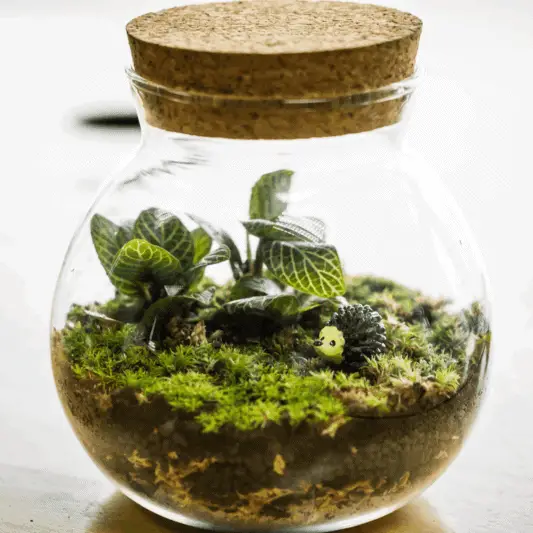
The moisture from the soil and plants evaporates into water vapor which is then condensed within the walls of the terrarium container. Precipitation then occurs when the water droplets from the condensation get too heavy and fall back to the plants and soil below. Due to this automated process, closed terrariums are mainly self-sufficient, requiring much less watering and maintenance. Due to the high degree of humidity and moist environment that closed terrarium plants need to survive, closed terrariums are not really suited for outdoors. It would be too hard to control the environment inside the terrarium when the terrarium is constantly subjected to the unpredictable outdoor elements and conditions.
Open Terrariums
Open terrariums do not require a lid and are not fully enclosed. They are best suited for plants that love the sun and do not require a moist environment. Open terrariums prefer circulating air and drier conditions which makes them great for outdoors. Succulents and Cacti are the best choice for an outdoor open terrarium, however, if storing your terrarium indoors, most houseplants can be used as well.
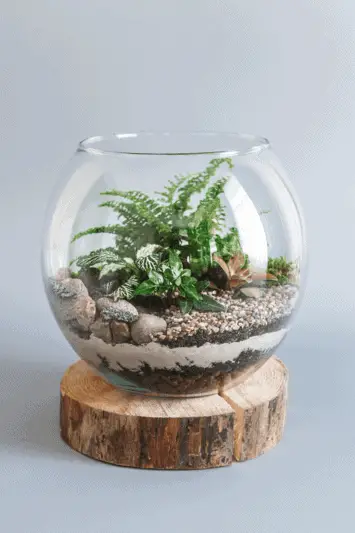
Open terrariums generally need to be watered more frequently than closed terrariums due to not having an internal water cycle through humidity buildup. However, always water with caution when dealing with desert succulents and cacti as excess accumulated water can cause your roots to rot and plants to drown. Succulents and cacti are used to dry conditions with minimal water so be sure to water sparingly once a week once the soil is completely dry.
Protecting Your Terrarium from Direct Light
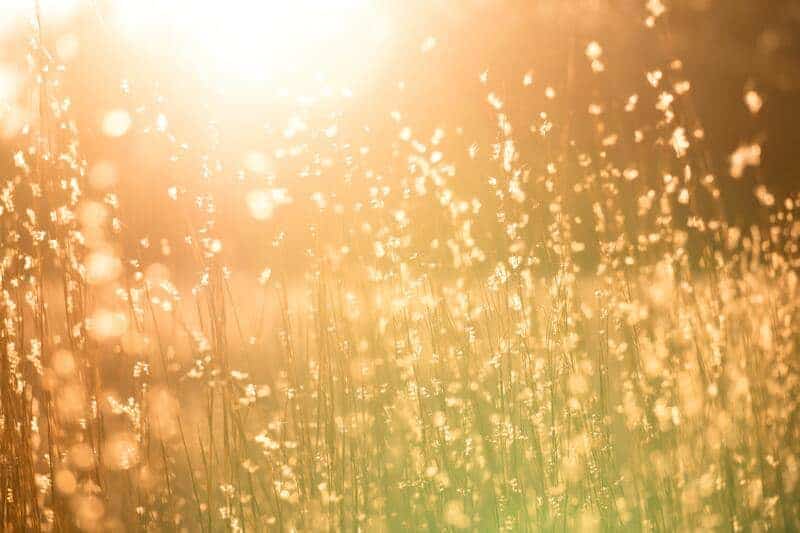
One of the biggest challenges for having an outdoor terrarium is managing sunlight. Most terrarium plants do not require direct sunlight/full sun, so it is very important that you make sure your plants do not overheat.
Temperatures within terrariums can rise very quickly when placed in direct sunlight as terrarium glass magnifies the heat received from the sun. Direct light refers to rays of the sun directly touching the terrarium casing or plants. Most plants cannot handle this kind of heat which will cause your plants to burn. Warning signs that your plants may be getting too much light and starting to burn is if the leaves show signs of scorching or have brown spots.
So, if you are planning to have an outdoor terrarium that will be exposed to direct light, make sure to use plants that can tolerate high levels of light and heat. Even though desert succulents can thrive in the full sun, making sure to give them some time in light shade or indirect light during the harshest heat periods of the day will prevent burning and prolong life expectancy.
Terrarium Plants that can Survive in Direct Light
Desert succulents would be ideal plants to use for direct light. Here are a few suitable suggestions that are relatively low maintenance:
- Agave Victoriae Reginae – Also known as the Queen Victoria Agave, this succulent originates from Mexico and loves the sun.
- Living Stones – The most common species are Lithops and Conophytums. Although they may look like pebbles, these stones are well and truly alive and generally flower once a year. They do not require much water, usually five times a year is sufficient. Make sure to avoid watering in the winter to prevent bursting leaves.
- Aloe vera – Also referred to as the “Medicine Plant”, the sap of the aloe plant has been used for centuries to treat wounds and burns (Healthline.com). It is a great plant to have on hand for those unexpected emergencies. Make sure to allow the soil to dry out between watering and that they receive plenty of light.
- Paddle Plant – Also known as the Desert Cabbage, grows best in bright light. When placed in direct sunlight, the round leaves will get a red tinge. Make sure to give the terrarium a quarter turn every week to make sure that all sides of the leaves are getting equal exposure. These plants are suited best for larger, open terrariums or pots.
- Tiger’s Jaw – Also known as Shark Jaw or by its botanical name of Faucarua Tigrina. This feisty succulent originates from South Africa and is a slow growing succulent which won’t outgrow your terrarium container for quite some time.
- Hens and Chicks – Also known as the Houseleek plant. This drought-tolerant succulent produces clusters of rosettes. The parent rosettes are the “hens” and the smaller rosettes produced by the parent rosettes are their “chicks”. These plants require full sunlight to part shade and love to flower during the summer months.
Most Terrarium Plants Love Indirect Light
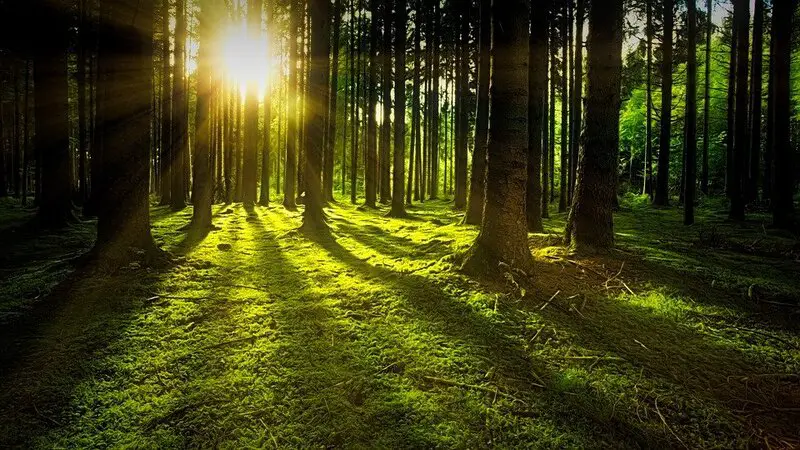
Bright, indirect sunlight/partial sun is a better source of light for terrariums as most plants need at least some light to survive, yet it is not enough to overheat your plants if monitored correctly. Indirect light is ambient light or sunlight that has been filtered.
An example of indirect, ambient light is when sunshine is being filtered through clouds or other objects such as a sheer (outdoor curtain). The sunlight is still present, but the sun rays are not shining on the terrarium directly. This prevents the terrarium from overheating while allowing the plants to receive the sunlight that is required.
Outdoor sheers are a great way to protect your patio or BBQ area from direct sunlight or glare. They allow terrariums to gain the light that they need without having to move them regularly to avoid direct sunlight. If your terrarium is in a garden or other outdoor area not suited for a sheer, a sunshade or canopy is a great alternative. This will be a lifesaver during the peak summer months in areas where you may be unable to put up a sheer. Make sure to find a sunshade that comes with ropes and is ready to use. These are my top picks for an outdoor sheer or canopy that are affordable and easy to set up.
It is best practice to not move your terrariums around to follow the sun or to avoid the direct light on a regular basis. As plants are naturally drawn to light, they tend to struggle if they must repeatedly orientate themselves. That is one of the benefits of using a sheer or canopy to assist in balancing the light, allowing you to keep your terrariums in one place.
Terrarium Plants that Thrive in Indirect Light
Although there are many terrarium plants that can thrive in indirect light, succulent plants suited for open terrariums would survive best in an outdoor setting. Below is a list of plant options that do best with indirect sunlight or partial shade.
- Zebra Haworthia – Also known as the Zebra Cactus, this plant has visual similarities to the Aloe plant. They don’t like direct sunlight and do best when in partial shade or indirect light.
- Burro’s Tail – This unique succulent requires little maintenance but comes with caution. The one thing to look out for is to be extremely careful when watering or moving the plant as the leaves are very fragile and will fall off easily. On the plus side, you can propagate new plants from each leaf.
- String of Pearls – A beautiful, cascading succulent that can add that extra elegance to your terrarium. These plants would thrive best under a sheer or shaded area, with indirect light.
- Crown Cactus – Also known as Rebutia Cacti, can tolerate a range of light conditions, from partial shade to full-sun. However, they tend to thrive best in bright, indirect light and cooler temperatures.
- Gasteria – Commonly referred to as Ox Tongue, due to its long leaves and rough texture. Gasteria is a slow growing succulent that requires little water and prefers lightly shaded conditions.
- Sand Rose – Known for their dual colored, rosette styled leaves showing olive green on one side and wine red on the other. This low maintenance succulent requires free drainage soil and minimal watering. The flowers they produce can grow up to 4 inches tall.
Living in a Hot Climate
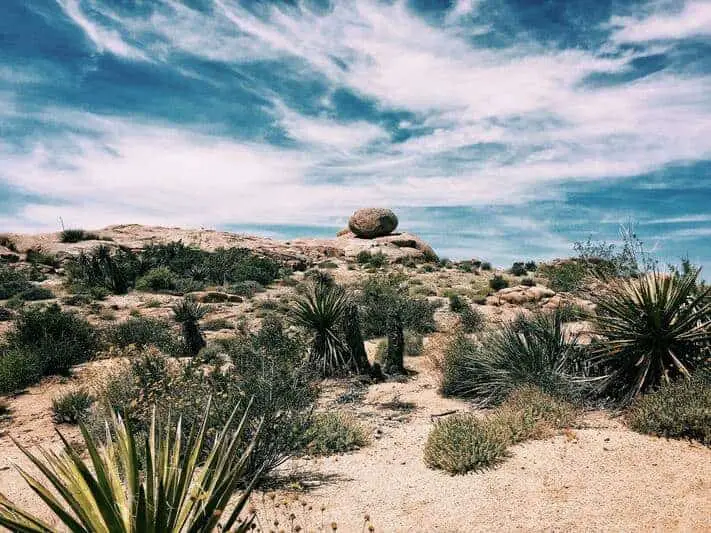
If you happen to live in a hot climate there are a few important things to consider that will impact your choice of plants and degree of maintenance required to keep your terrarium healthy in the heat. Living in a hot climate with low humidity and dry air will provide less stress and lower maintenance when caring for your terrarium.
The American Horticultural Society has developed a similar ratings system to the USDA’s Hardiness Zone Map, with a Heat Zone Map. This map is helpful when trying to determine which plant types can tolerate a hotter climate. The summary table at the end of the article contains the hardiness and heat zone ratings for any plants suggested throughout the article.
A hot climate with dry heat and low humidity levels is the ideal situation when dealing with trying to grow terrariums in hot climates. This is because succulents are often the best plants to grow in an outdoor terrarium, and they just love a dry, desert like environment. The one thing to look out for however, is that your plants are getting the water they need, without over watering. Watering once a week is usually sufficient, making sure that you wait until the soil is completely dry before watering.
Humidity adds to the moisture in the soil and can lead to fungal infections and root rot. These symptoms can be deadly to your succulents and the overall health of your terrarium. However, if you happen to live in a hot climate, with high humidity levels, all hope is not lost. There are things that you can do to reduce the humidity so that having a terrarium is a possibility.
Morning/evening dew is quite common in hot, humid environments and can inconveniently add to your humidity concerns and add unnecessary moisture to your soil. I would suggest storing your terrarium under a roof of some sort or using a canopy to assist with dew prevention.
One key thing that can greatly help to reduce the humidity within your terrarium is using more pumice.
Pumice is a type of volcanic rock that is an excellent soil conditioner.
Pumice works great when mixed with soil as it increases aeration and drainage and helps the soil to dry out faster. As pumice is an inorganic rock, it is long lasting and will not decompose or crumble away over time.
Another challenge with hot climates is light management. Making sure you understand the lighting requirements for your terrarium plants is vital, but even if they can handle long periods of direct sunlight, scorching can still occur, especially in extreme hot climates. Be aware of when the peak summer months occur which can often cause rising temperatures and heat waves. Consider using a sheer or canopy to prevent scorching or as an alternative, transition your terrarium to a partially shaded area in the weeks leading up to your summers peak season.
Plants that Can Survive in a Hot Climate
Don’t forget to keep an eye on your humidity levels and how your plants are doing. Even though the below list of succulents thrive in hot climates, if moisture levels are left uncontrolled, it could damage your plants.
- Blue Chalksticks – This succulent acts as a great ground filler for your terrarium and can tolerate extreme heat. It is also fire resistant, although lets hope you never have to put it to the test!
- Miniature Golden Barrel Cactus – This drought tolerant cacti can last for years if cared for correctly. Make sure to provided lots of sun and to water regularly making sure the soil is completely dry before watering.
- Pachyphytum fittkaui – A relative of the Jade Plant, this succulent has blue-green, finger like leaves that display a pink to purple blush when basking in the sun. If temperatures drop below 45°F, be sure to move the terrarium inside as they do not handle frost or the cold well.
- Paddle Plant – These sun-loving succulents love the dry heat and will struggle in temperatures below 50°F. The round, flat leaves can provide a variety of color to your terrarium and was the winner of the prestigious Award of Garden Merit of the British Royal Horticultural Society in the United Kingdom.
- Aloe Vera – Aloe Vera can tolerate temperatures between 50°F to 85°F and love the full sun. Although this plant contains amazing medicinal properties if applied correctly, it can be poisonous to dogs and cats (ASPCA.org). So be sure to keep your terrarium out of reach from curious pets.
Living in a Cold Climate
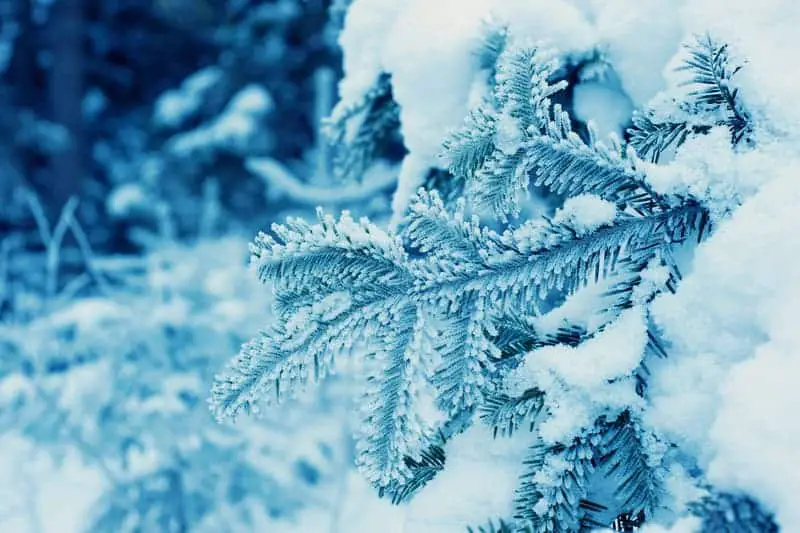
There are many challenges to living in a cold climate that can create difficulties when creating an outdoor terrarium. Aside from choosing plants that can tolerate extreme winter conditions, understanding the environment challenges and how to manage them will allow you to have that winter terrarium that you have dreamed of!
Hardiness ratings are a system developed by the United States Department of Agriculture (USDA), to test the cold tolerance levels of plants. You can use our interactive map to find out your local hardiness zone which will help you to understand which plant types will be able to survive in your local climate. The summary table at the end of the article contains the hardiness and heat zone ratings for any plants suggested throughout the article.
Frost and snow prevention may be quite difficult depending on how extreme your environment is but there are a couple of things you can do as long as you’re not living in a constant blizzard. Placing your terrarium in a covered area or using a portable, pop-up mini greenhouse could also work. They come in all shapes and sizes and often come with zipper windows and doors with clear plastic walls. This type of mini greenhouse can also help with prevention against strong winds, rain, and extreme temperature drops.
Humidity is another common challenge within cold climates. As mentioned above, pumice is a great option to assist with moisture reduction in humid environments. As cold climates often have to deal with frost and snow, in addition to rain and excess moisture, it would be a good idea to get a soil moisture sensor to keep a closer eye on your terrarium’s humidity levels.
Soil moisture sensors can read the moisture levels within your soil and let you know if they need water or if the soil contains too much moisture and needs attention.
This 3-in-1 moisture sensor is a great choice as it also measures pH and light levels for an added bonus.
Another challenge, depending you where you may live, is lack of sunlight. There are many areas, where during winter months in particular, daylight is reduced to just a few hours. Other areas may experience extended periods of time that are overcast or where the clouds continuously block the sun for months on end. If you happen to live in this type of environment, then make sure to use plants or succulents that only require indirect light.
If you happen to have done all you can to keep your terrarium healthy and strong, but you notice one of your plants has early signs of root rot or is dying, make sure to remove those plants immediately. Dying plants can infect the other plants within your terrarium and so it is better to remove and replace them before your whole terrarium faces a similar fate.
Outdoor Succulents that can Survive in Extreme Cold Weather
Making sure you pick the right plants is crucial to the survival and health of your outdoor terrarium, especially in a cold climate. Below is a list of suitable succulents that can tolerate extreme winter conditions:
- Sempervivums – These rosette style succulents can tolerate extreme cold temperatures up to -30°F. The Sempervivum Red Lion and Mahogany are two great varieties that will provide a variety of colors for your terrarium.
- Sedum Acre (Gold Moss) – This evergreen perennial has can tolerate a wide range of temperature changes from 25°F all the way down to -40°F. It is a mat-forming succulent with tangled stems covered with bright green leaves. During the summer months you can expect bright clusters of yellow flowers.
- Dragon’s Blood Sedum – In the summer this low-maintenance sedum displays hot pink flowers and during winter months the green leaves turn a gorgeous wine red. The Dragon’s Blood Sedum thrives in cooler temperatures ranging from -40°F to -25°F.
- Opuntias – Commonly known as the Prickly Pear Cactus, is the most common succulent that can be found across the US. These cold-hardy cacti can survive in -22°F weather and just love the sun. They are also drought tolerant, so can be a great addition to an outdoor terrarium. Just be careful of those spikes!
- Ice plant Oscularia Deltoides – These plump little succulents are great winter plants and can tolerate mild frost and slightly freezing temperatures. Although they may not be able to handle the freezing temperatures of the other plants on this list, they can happily tolerate temperatures as low as 15 to 20°F.
Additional Challenges for an Outdoor Terrarium
Other challenges that present themselves when trying to keep a terrarium outdoors is the unpredictability of the elements and environment. One vital consideration is to make sure that your terrarium is anchored properly so that it doesn’t get knocked over or blown away during strong winds. This can be more difficult for hanging terrariums, so make sure to be strategic when deciding on where your terrariums will be placed. The last thing that anyone wants is broken glass everywhere or a broken terrarium that you spent so much time on.

Constant rain can also be an issue. The excess moisture in the air can damage your plants if not constantly monitored and maintained due to the increase in humidity. As the best terrarium plants suited for outdoors are succulents, constant moisture and humidity can create problems keeping your plants healthy. If you happen to live in a place that receives lots of rain, then make sure to choose your plants wisely and apply some of the methods discussed earlier for reducing and monitoring humidity.
Table Summary of Plants
Choosing the right plant type to have in your outdoor terrarium is key to making sure it can thrive within your specific type of climate. The USDA Plant Hardiness Zone Map below and the AHS Heat Zone Map are the standard by which gardeners and plant enthusiasts can determine which plants are most likely to thrive at a location. Under the map below, you can enter your location and understand your geographical hardiness zone.
Here is a summary of information for the plants mentioned throughout this article for your convenience.
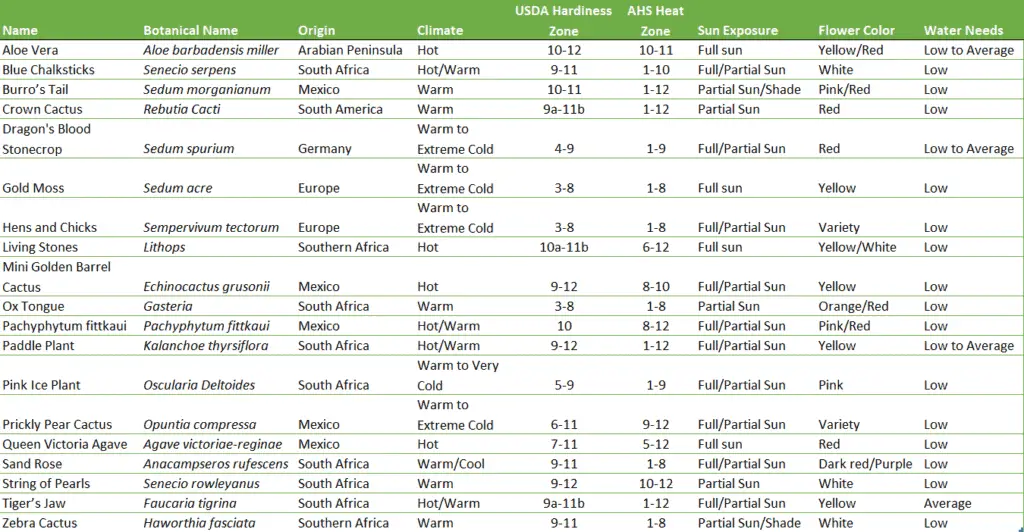
Final Thoughts
Although maintaining an outdoor terrarium creates some additional complexities, that is no reason why you should shy away from one if that is your desire. Just make sure that you consider the following key takeaways:
- Open Vessel containers are best for outdoor use
- Succulents and Cacti are great plant choices for outdoors
- Understand your plant’s sunlight exposure requirements
- Direct Light/Full Sun vs Indirect Light/Partial Sun
- Understand your climate and what plants are best suited for your location
- Check USDA Hardiness Zone & AHS Heat Zone Ratings
- Protect your terrarium against rain, strong winds, frost, and high humidity

Meet Brad, the creator behind Vivarium Vibes, where his deep connection with nature and animals truly comes to life.
